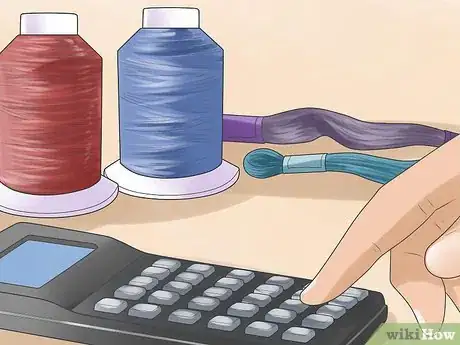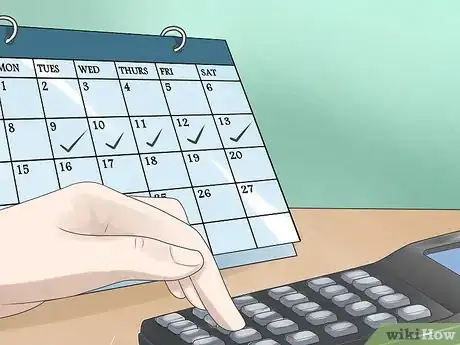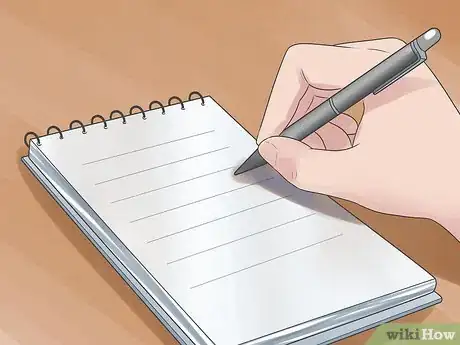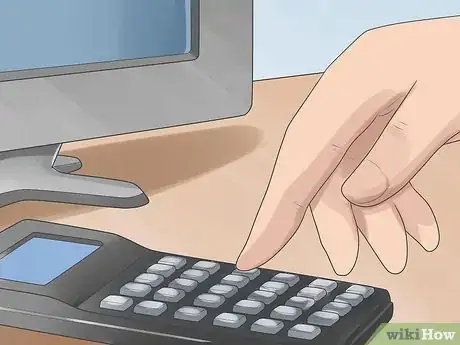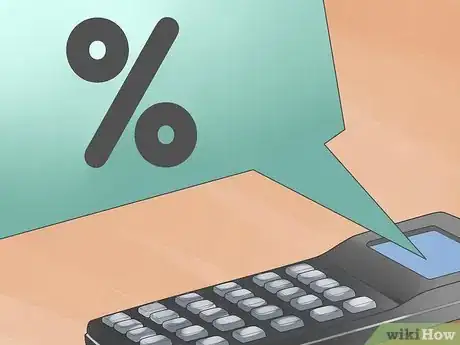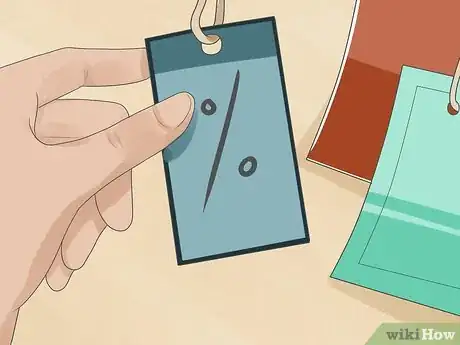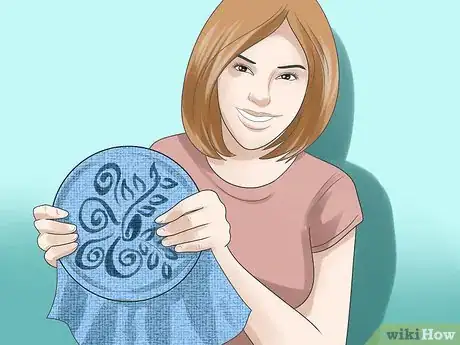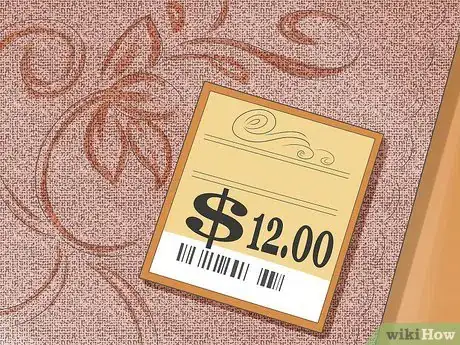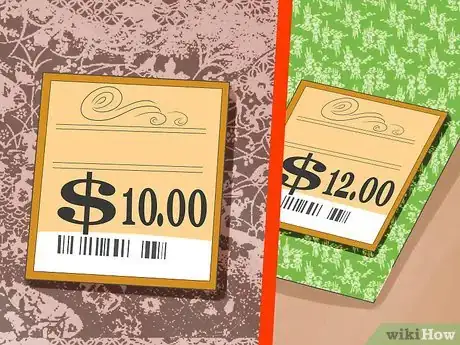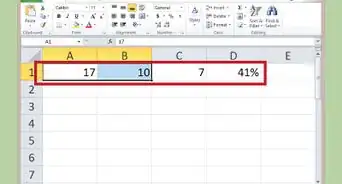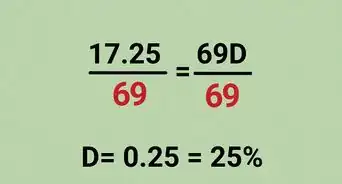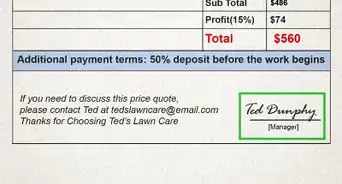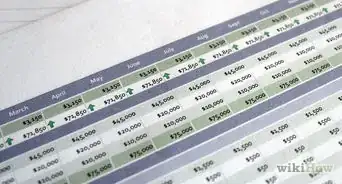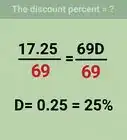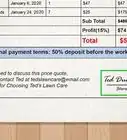X
wikiHow is a “wiki,” similar to Wikipedia, which means that many of our articles are co-written by multiple authors. To create this article, volunteer authors worked to edit and improve it over time.
This article has been viewed 32,792 times.
Learn more...
One of the most difficult aspects of selling your own embroidery is knowing how to price it. Determine a basic price by adding together your total costs and your desired profit, then alter that price accordingly to meet the needs of the market.
Steps
Part 1
Part 1 of 3:
Cost Plus Profit Calculations
-
1Calculate the cost of materials. The primary cost you'll need to consider is the cost of your materials. Make a list of all the materials used for your embroidery work and the prices of each one.[1]
- The fabric you embroider on and the thread you use to embroider are the most obvious materials, but all beads, charms, and additional embellishments must also be accounted for.
- If you frame your work, the cost of your framing materials must also be included.
-
2Price your labor. You need to pay yourself for your time, especially if you plan on selling your embroidery as a legitimate business.[2]
- Determine an hourly wage. If you want to keep your prices low, use the current minimum wage.
- You can either keep track of how much time you spend on each individual piece or average the time you spend on your embroidery work.
- Multiply the number of hours you spend on each work by your chosen wage to determine the labor cost of each piece.
Advertisement -
3Determine your overhead costs. Overhead cost refers to the money you spend to run your business. You could also term these as your "operating expenses."[3]
- Make a list of all the equipment you use and the associated yearly costs of that equipment. This includes the cost it takes to buy or rent embroidery machines.
- List the other costs you pay to run your business over the course of a year, including the cost of merchant licenses, office space, or Web space (if applicable).
- Calculate the number of hours you work each year, then divide the number of hours worked annually by the cost of your annual costs. This will give you the cost of doing business per hour.
- Multiply the cost of doing business per hour by the number of hours you spend on each piece to determine the cost of each piece. This if the overhead cost value you will need for your final price calculation.
-
4Include your related costs. Related costs are the costs you spend when you plan to sell at particular venues.
- These costs may not always be an issue, especially if you only sell your embroidery online.
- If you plan to sell embroidery at a craft fair, you should add together the cost of the booth, the cost of travel expenses, and all other costs related to that specific fair.
- Tally up the number of items you plan to sell at that specific craft fair.
- Divide the total amount of related costs by the number of products you plan to sell to determine the cost per item. This figure is the one you will need for your final price calculation.
-
5Figure out a profit value. If you want your embroidery business to flourish, you need to calculate your profit value.
- If you plan on keeping your embroidery business small, your labor wage can be treated as your profit value. You do not need to calculate your profit value separately if you use this option.
- If you plan on supporting yourself with this business, you'll need to calculate a larger profit outside of your labor wage. Add up total costs of your business (materials, labor, overhead, and related costs), then multiply it by your desired profit percentage.
- A profit percentage of 100% will allow you to break even with your costs.
- If you want to exceed the cost of your business, you'll need to multiply those costs by a larger percentage. For instance, multiply your total costs by 1.25 if you want to earn a 125% profit. This will allow you to earn back the cost plus an additional 25% profit.
-
6Add everything together to determine the price. Calculate your total cost by adding together the cost of materials, labor, overhead, and related expenses. Add the profit to these costs, as well.
- The sum of these values should be the final price of the product.
Advertisement
Part 2
Part 2 of 3:
Market Considerations
-
1Know your venue. Consider the venue you'll be selling at and the clientele you plan to sell to. The price of your items should reflect these factors accordingly.
- If you plan on selling your work at a craft fair, research the customers who usually attend the fair. Customers at a school or church craft fair usually have a lower budget than those attending boutique fairs or corporate fundraisers.
- If you only sell online or in a store, consider the type of items you embroider and the way you market them. Unique embroidered clothing sold in a boutique would sell for a higher price than clothing sold with a mass-produced embroidered logo via a small website.
- You can lower the price according to venue and clientele by either lowering your labor wage, lowering the profit margin percentage, or using cheaper materials. Prices can be raised by increasing your labor wage, increasing your profit, or using more expensive materials.
-
2Pay attention to the competition. The prices you sell your embroidery for should be within the same range as your competitors. Alter your prices accordingly if this is not the case.[4]
- If your prices are too high, you will obviously lose business to your competitors.
- If your prices are too low, customers may perceive your product to be less valuable or of a lower quality, and you may still lose business to your competitors.
-
3Enhance the perceived value to increase the price. If you want to convince customers to buy from you at a slightly higher price than a competitor will offer, you need to offer your customers something that makes them believe your product is more valuable.
- Design plays into this a lot. If your designs are more beautiful and more unique than the competition's, they can be viewed as more valuable.
- Customer service is another aspect to consider. If you put exceptional effort into making your customers happy or if you are willing to customize your work, customers may determine that shopping with you is a more valuable experience overall than shopping with someone else.
Advertisement
Part 3
Part 3 of 3:
Additional Thoughts
-
1Mark your prices clearly. Customers are more likely to buy from you when your prices are straightforward and easy to spot.[5]
- If you sell at craft fairs or through a physical storefront, the prices should be marked in front of the product and within the customer's direct line of sight. Most customers will not stop to inquire about the price of an item.
- Similarly, individual pieces of embroidery sold online should be marked clearly since many customers will not attempt to contact you to inquire about the price.
- If you sell embroidery that customers must order in advance, provide a price sheet that clearly lists the cost of base products, personalization, and so on. Make this price sheet easy to find, and stick with the prices you list to earn credibility.
-
2Provide options. Offer prospective customers a range of options that may suit their price range better.
- For example, you could sell an elaborately embroidered piece made with the best materials at your highest price. Include elements of that design and use slightly lower quality materials to create something similar that can be sold at a much lower price. Sell the products simultaneously so that someone who cannot afford the higher priced product may consider the similar, lower priced product.
- If someone orders embroidery from you but cannot afford the price you quote, offer to reduce the price by reducing the cost. Let them know how much the price would drop if you used fewer colors, used fewer stitches, or made the embroidered section smaller.
-
3Offer incentives and discounts carefully. Special deals can be a good way to attract attention from new customers while renewing the interest of past customers, but they should not be relied upon.
- Special sales should only be used on a short-term basis. This includes buy-one-get-one offers and promotional gifts.
- Loyalty incentives should be more long-term. Examples include loyalty cards, referral discounts, and returning customer discounts.
- You can also offer permanent discounts on quantity. For instance, if the price of one embroidered bag is $25, the cost of three might only be $60, putting the price per bag at a discounted rate of $20.
-
4Be confident. Once you set a price, be confident that it is the right price and let your prospective customers see that confidence.
- When dealing with customers directly, make eye contact and speak clearly. Never apologize for the price of a product.
- Showing confidence will inspire confidence. If you seem confident in your pricing, your customers will perceive that those prices are fair and that you know what you're doing.
- If you mumble or seem uncertain, customers are more likely to think that you're trying to sell them embroidery at a higher cost than necessary. They may walk away from the sale or try to haggle the price down.
Advertisement
References
- ↑ https://www.mybluprint.com/article/tips-for-pricing-your-handmade-goods
- ↑ http://www.handmadeinamerica.org/blog/how-to-price-homemade-craft-items/
- ↑ http://www.handmadeinamerica.org/blog/how-to-price-homemade-craft-items/
- ↑ https://www.mybluprint.com/article/tips-for-pricing-your-handmade-goods
- ↑ https://www.craftylifemom.com/pricing-embroidery-work-guidelines-when-starting-an-embroidery-business/
About This Article
Advertisement
